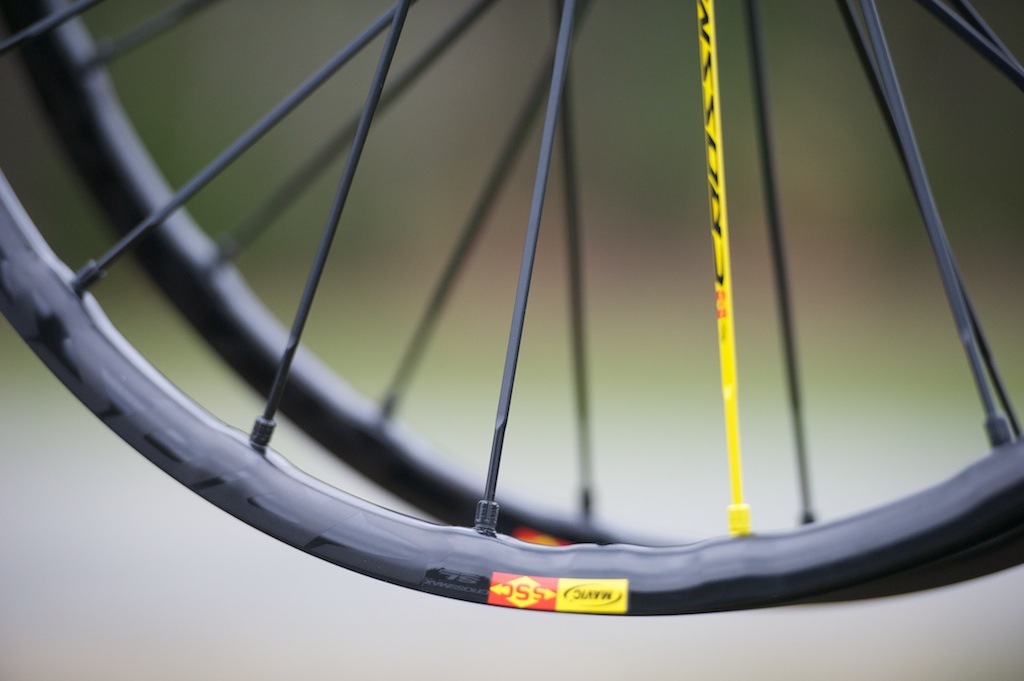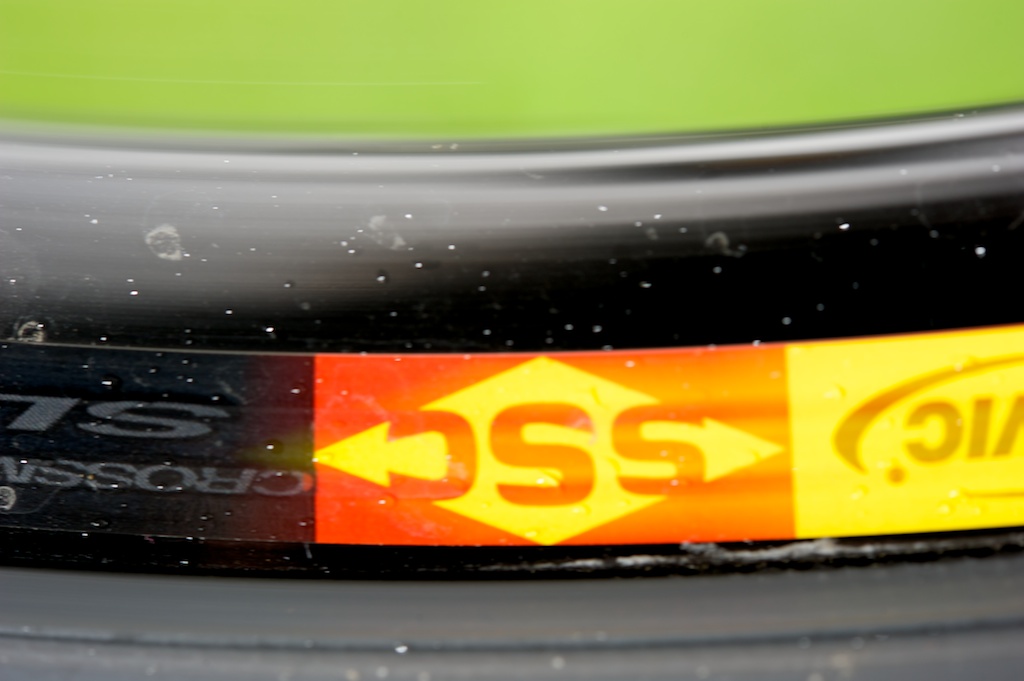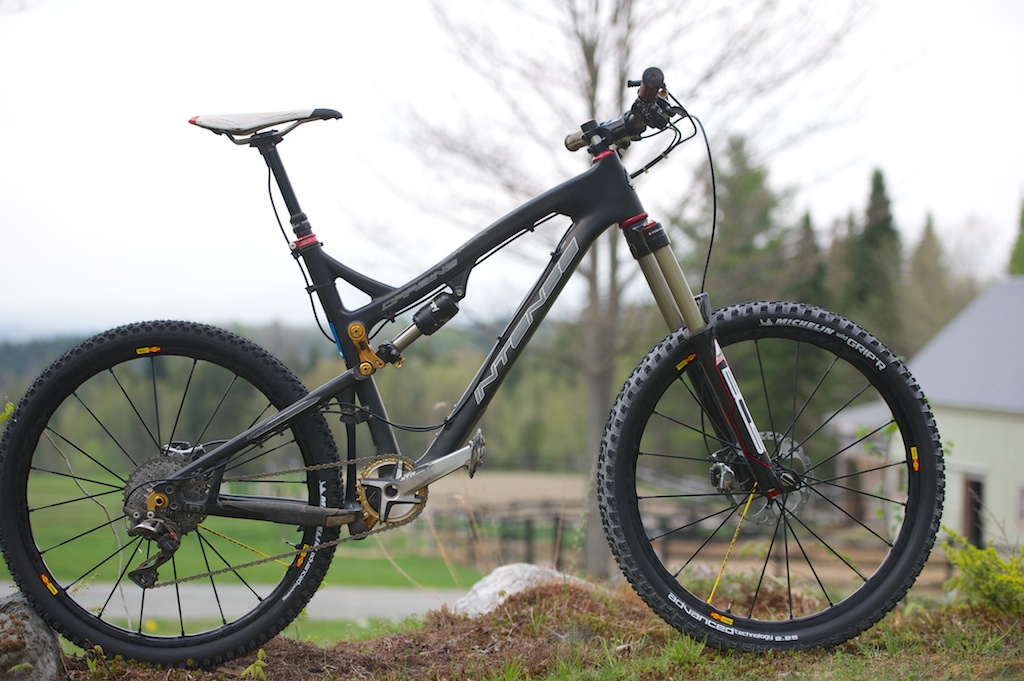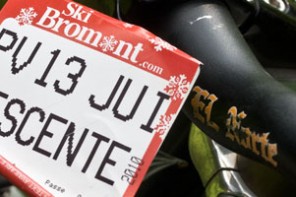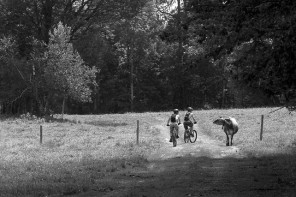What’s a new bike season without fun new toys to review? If not a new bike, then “upgrades” on the old one. Do they really matter, or do they perhaps just motivate us to go out and ride a little more? Is the trend toward “Enduro-specific” components making our bikes better, or just heavier and dumber on trails that seem to keep getting smoother? I’ve decided to embrace some of the trends and fly in the face of others this year as I’ve upgraded my trusty Intense Carbine.
For starters, I’ve finally decided to ditch my triple-crank and go all in on the one-by thing. I was able to make it through pretty much all of last season without changing out of my 32t middle ring more than a few times, so I went ahead and popped for the new XTR 11-spd stuff. The 11-40t cassette was just enough to make me feel like I’ll be able to do any ride on that. Even on a bad day. To fly in the face of tradition though, I decided to go with an oval-chainring. Without having to worry about front-shifting it seemed like an easy one to try. I first opted for a Rotor brand chainring as they’ve been at this game the longest, but for whatever reason, they chose not to manufacture it in a standard 104mm bolt-circle (and according to the guy on the phone, they have no plans to!). I found three other companies that make a narrow-wide oval chainring in a 104 BCD, they are Wolf Tooth, B-Labs, and Absolute Black. I selected a Wolf Tooth 34t ring. I have only ridden it once, so nothing to report yet except that it looks weird and feels shockingly normal.
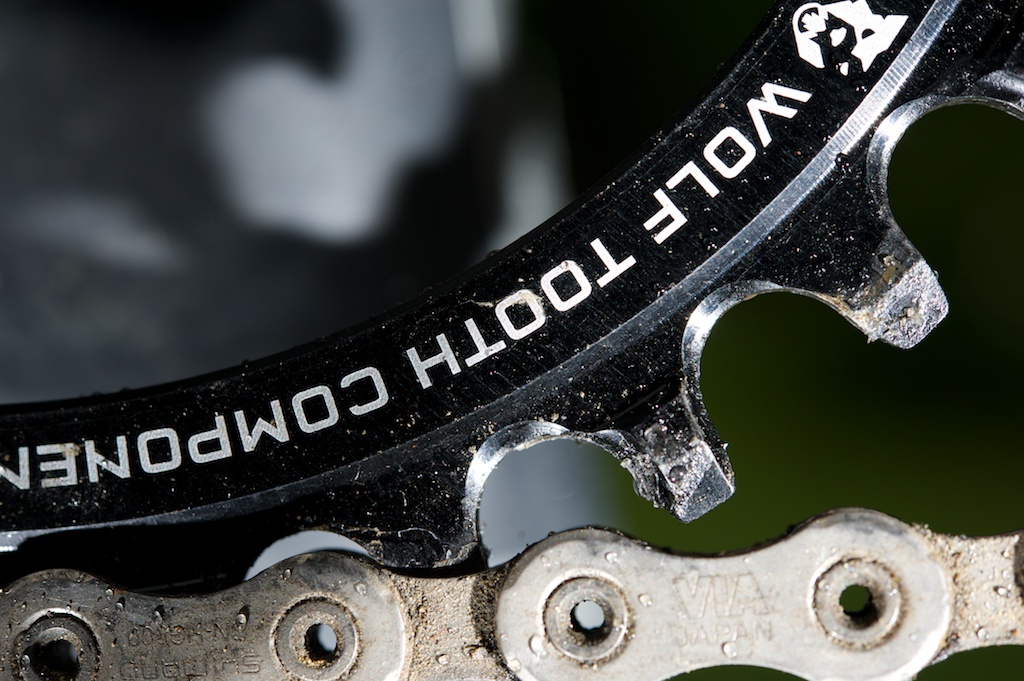
Over the past two seasons, I’ve been underwhelmed by the rear shock on my Intense Carbine. It came with a Fox RP23 which just never felt right. If it was set to allow full travel, it had too much sag, and if it was set with the proper sag I couldn’t use the whole thing. It always felt a bit harsh on small bumps, and the pedaling was so-so. Last season I used a BOS Vip’r 2.1 rear shock. It had much nicer small bump compliance, and pedaled better than the Fox, but on longer downhills it was easily overwhelmed. It would get hot and start to get “stuck-down” in the top of it’s travel. It was also easy to blow through all of the travel on G-outs. I think it could have been a good shock, but service for it in the U.S. is practically non-existent and if you need to send it to France for service like I did, well…. you’d better have a backup plan because mine was gone for nearly two months. For this season I wanted some of what the BOS gave me, but with consistent performance when hot and also, decent service. I really wanted to try the BOS Kirk with it’s piggyback reservoir, and high and low speed compression adjustments, but just couldn’t get over the sour taste of my Vip’r sitting on a bench in France while everybody was on vacation. Or the ignored e-mails and phone calls. So I settled on Cane Creek.
The Double Barrel Air is a known quantity and I’ve been using DBs on my DH bikes for years, but I’m also a nerd and didn’t really want to put such a heavy shock on my bike. That led me down to the DB Inline which is lighter by about half a pound, and also significantly less expensive. So far the main thing I’ve enjoyed about this shock is that the knobs actually do stuff! One click of Low Speed Compression can actually be felt. I am turning my Hi Speed Rebound in 1/4 turn increments trying to get it just right, and I will, but I’m not there yet. You actually end up learning a lot about suspension when the adjusters work. I can now say with some reasonable authority that I’d have liked my BOS shock to have higher HSC and that the LSC was one of the places lacking on the RP23.
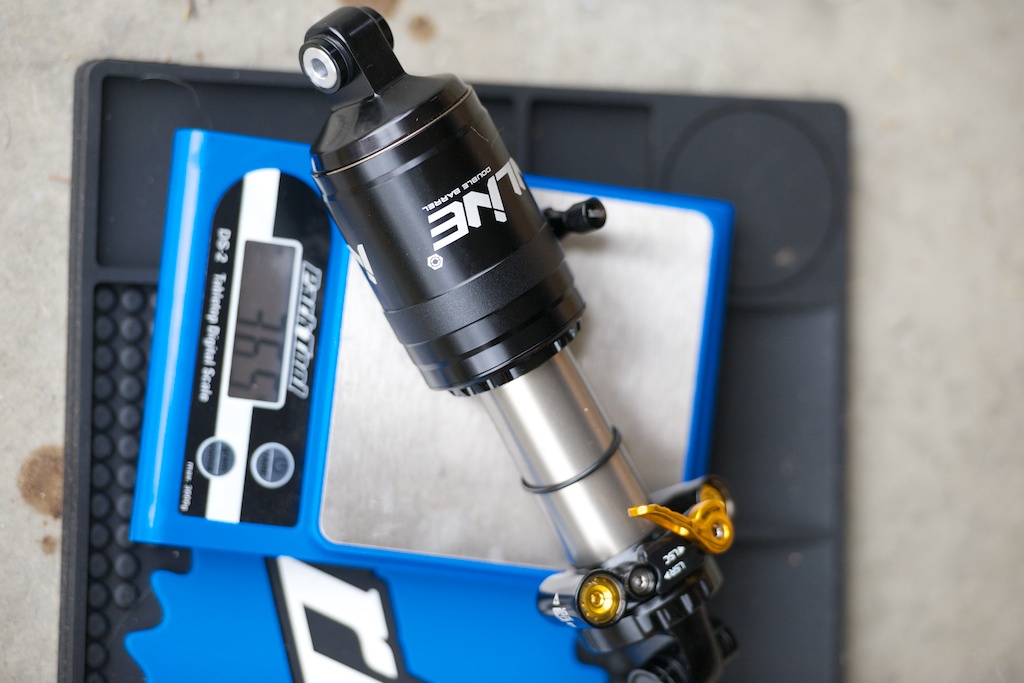
Ever since Keith Bontrager first started bending MA40s into 26″ rims, I’ve been using Mavic rims quite happily. First with handbuilds and then with their Crossmax series wheels. My Carbine has had Crossmax SXs for the last two years and other than a broken axle (which was hardly even noticeable except for some creaking and rear-end flex), they’ve been running great. But are they overkill? They are actually burlier than Mavic’s enduro offering, the aptly named Crossmax Enduro. While the Crossmax Enduro has internal measurements of 19mm in the back and 21mm up front, the SX uses the 21mm rim front and rear. These puppies weighed in at 1755 grams and I mostly paired them with enduro type tire offerings from Mavic, Hutchinson and Michelin that weighed in at between 850 and 1000 grams each. That’s a lot of weight, but also confidence. I can run them in the mid to high 20psi range with no fear of rolling a tire or getting a flat.
This season, that wheelset has been sidelined by a pair of Mavic’s new for 2015 Crossmax SL. It uses fewer, bladed spokes and a very organic looking milled 19mm internal width rim mated to a carbon fiber front hub and aluminum rear for a weight of only 1400g for a pair. That’s in the weight range of carbon rimmed wheels that come in at three times the price. I took that all the way with Michelin’s Wild Race’r Advanced Ultimate tires which weighed less for a pair than for a single enduro type tire. Holy weight savings. My bike dropped from just under 30 lbs before the upgrades to just over 25. It felt fast going up hill, but hopeless going down, so I’ve moved to a slightly more robust tire combo and plan to report back once I’ve had more seat time.
